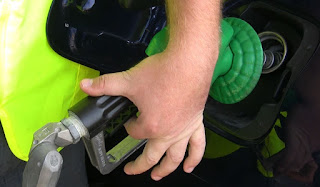DQS noted that improvement requires persistence and dedication in the face of the inevitable changes that take place both inside and outside organizations.
"By maintaining organizational focus on continual improvement in their business processes and management systems companies such as...Husky Corporation...have demonstrated a clear vision, leadership commitment and exceeded stakeholder expectations," Ganesh Rao, DQS President and CEO wrote in a newsletter announcing the recognition. "Every business metric in these organizations reflect their business excellence, and they are each recognized as leaders in their industry sectors."
A link to the full DQS newsletter is provided here. https://dqsus.com/wp-content/uploads/2016/05/DQS-Q2-2016-Impact-1.pdf
Husky was asked to submit an article about its journey toward 20 years of ISO: 9001 certification, which we share in the space below.
Husky Corporation: A Quality-Driven Legacy
Companies that stand the test of time frequently
point to quality as a characteristic of their success. Husky Corporation, which
since 1947 has set the standard for developing general fueling and related
products in the transportation sector, places quality as one of its key
pillars.
Husky Corporation manufactures fuel nozzles,
Safe-T-Breaks®, swivels and accessories from production facilities in Pacific,
Missouri. Customers all over the globe expect these products to work flawlessly
each time they fuel their vehicles. That is a primary driver behind the
company’s pursuit of certified quality management systems more than 20 years
ago.
“ISO was getting national and international attention
at the time. Plus, Husky was dealing with several large customers including BP,
Shell, Exxon / Mobil, which we believed were going to require quality
certification by their vendors,” said Husky Corporation Vice President Brad
Baker. “Coincidentally we needed to upgrade our processes. ISO provided a structure
to formalize our processes.”
Continuous Improvement in Action
The quality policies, document control systems and
methods to monitor key metrics that resulted from the initiative helped Husky
develop processes for continuous improvement which continue to help drive the
company from $7.5 million sales in the mid-1990s to approximately $35 million
in 2015.
“ISO:9001 provides a foundation, baseline and a goal.
If utilized correctly, you can have an established core for continuous
improvement,” said Husky Quality Assurance Manager Steve Baynham. “In itself,
ISO won’t allow continuous improvement. But it establishes a core, with key metrics
in place, as a benchmark for improvement.”
The fact that auditors review processes frequently
provides both third party validation and sharing of best practices.
“There are many continuous improvement activities,
investments in new equipment, new technologies, and new software to better analyze
the data that’s collected,” said Blake Sommer of DQS, Inc., a third-party
registrar that audits company’s like Husky to the international standards. “I’ve
seen a lot of that happening, which is exactly what should happen.”
The next steps will encompass Process Failure Modes
and Effects Analysis (PFMEA) improvements around the entire company – order
entry, purchasing, manufacturing, shipping and customer contact. The upside
proactively detects issues before they occur.
“Husky is focusing on the cutting edge. Six sigma
methodology and PFMEA are tool sets we are putting in place to keep the company
on the cutting edge,” Baynham said. “We don’t want to inspect parts after the
fact, which has zero value. We want to make sure the process is monitored to
ensure it is sound and will deliver consistently high quality parts at the end.
That is where there is value.”
Working the Plan and Planning the Work
Company leaders believe in ‘working the plan and
planning the work’ as a strategic growth formula. Husky Corporation recently
acquired fluid line kit supplier S.U.R.&R., which was made possible in part
due to Husky’s focus on maximizing value from is its production processes.
“Another strong thing here is communication between
management and the personnel. They hold monthly meetings with all personnel to
keep them abreast as to new business, performance and efficiency,” Sommer said.
“There are daily toolbox meetings to discuss issues. The employees are kept
informed and they like that.”
In recent years Husky has also acquired BJE lube and
oil products along with Hewitt aviation fueling products. Both utilize the
company’s internal systems and production facilities. Husky also has strategic
partnerships or alliances with Benecor DEF dispensing and storage products,
Enevo logistics optimization systems, and RS liquid loading arms.
“A lot of companies just want to get a certification
for its own sake,” Baynham said. “Husky is doing it because we truly see the
cost benefit and the value created olf having quality processes in place that
are utilized for continuous improvement.”


